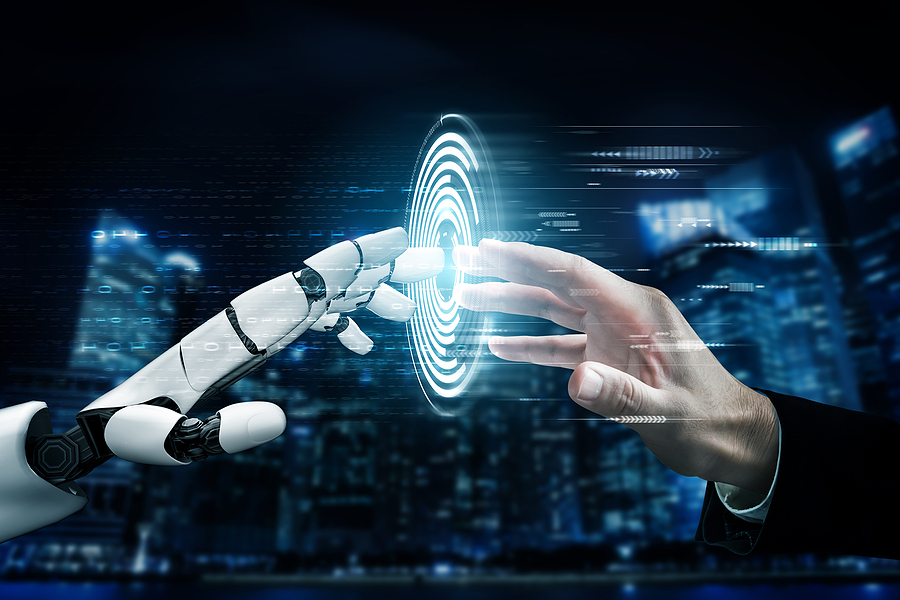Artificial intelligence, or AI, is a collection of several different technologies that are designed to work together for the purpose of empowering a machine to do things that humans do like sense, understand and take action. There are many different definitions of AI because it is more than one thing.
AI and the Human Brain
Researchers still don’t know everything about the human brain. AI and deep learning are helping them understand it better. It’s common knowledge that the body is a complicated entity, one that features organs, neurons, glands, cells, and tissues. The brain directs the body so that its different parts can work together seamlessly.
The brain is the control center when it comes to the elements that people can command like speaking, making decisions, and moving. It also oversees what people don’t control consciously such as breathing, blood circulation, and digestion.
Artificial intelligence and neuroscience can enrich what researchers know about the human brain. AI may be able to determine how the brain stem, cerebrum, and cerebellum can be elevated using advanced medicines. AI may even be able to help researchers develop healthcare techniques that could cure ailments like Tourette’s syndrome or OCD.
Unlocking the Brain’s Hidden Abilities
Neurological experts are currently researching how the human brain sends sensations to different areas of the body to direct different movements. New studies through AI may allow health professionals to unlock the brain’s hidden abilities. By obtaining a better understanding of the different lobes in the brain, health professionals may be able to tackle conditions like paralysis and other movement-related issues that people experience around the world.
AI can provide medical experts with more information about the structure and function of the human brain. With this information, neuroscientists are working to develop better brain stimulations for training purposes. In addition, AI offers enhanced pattern recognition, which can make it possible for research experts to test new ideas more efficiently. If AI reveals the brain’s hidden abilities, neuroscientists can improve how they treat the brain and the body.
How AI Will Change the Way People Do Business
Many global CEOs believe that AI will change the way that people do business in the next five years. In fact, an estimated 63% of them believe that AI will have a bigger impact than the internet. Right now, technology as well as additional environmental factors are inspiring change. These factors are increasing change to a level where many businesses are struggling to keep up. Businesses cannot continue to function in the same way as they have in the past and expect to stay relevant. Keep in mind that artificial intelligence increases productivity and eases workloads.
For instance, in the financial services sector, AI and automation are starting to perform the mundane tasks that humans were doing. However, some companies appear to be reluctant to turn that work over to AI and automation entirely. This means that leaders must shift their attention toward inspiring their workforce. As a leader, you’ll need to make your staff feel connected to a bigger picture, one with more purpose. This will encourage your people to look forward to a better way of doing things.
Research has shown that employees don’t need every detail about the company’s path forward, but they do need their leaders to be transparent about the problems that they’re facing at work, or you can give them the freedom to identify problems to help develop solutions. One of the main elements of employee experience involves trust. When you involve your workers in making decisions that impact their job or work environment, you establish trust. Employees need the space to understand why decisions are being made.
Use AI to Fight Back Against Employee Burnout
If you notice a decrease in an employee’s performance, then this may be a sign that the worker needs additional mental or emotional support. When you use AI-inspired tools, you can engage with your worker to get to the bottom of the issue and offer him or her some help. This can be a better option than an automatic disciplinary action plan for poor performance.
You know that one bad workday, week, or even a full month doesn’t indicate that you’ve hired a bad worker. Instead, focus on ways to help your employees deal with challenging times. You could also wind up with a worker who is performing at an exceptional level. They might be starting work earlier than before or staying later to put in more hours. If your staff is still operating remotely, then you might have a harder time catching this. If you review the worker on paper, he or she might appear to be performing better than the rest of your staff, but burnout could be close to happening.
When using artificial intelligence in project management, you can create AI models that are capable of mimicking burnout behavior, letting you step in before it happens. AI will draw your attention to the additional hours and advise you to have a discussion with your worker to see how they’re doing. People want to work more when they are trying to avoid something that’s happening in their personal life, or they might have a team member who is assigning them unrealistic workloads.
Use AI Responsibly
As you begin using AI to help your business operate more efficiently, be sure to use it responsibly. Set up AI in ways that protect the privacy of your employees, keeps things fair, and provides transparency. When it’s used wisely, AI will help you manage productivity loss, employee burnout, and turnover. Investing in your people is always a good business practice.
Welcoming AI into Your Everyday Business Processes
Artificial intelligence and machine learning are helping businesses operate more efficiently, but it’s important to help your current staff embrace technological changes. I can help you develop a strategy. Contact me at the Productivity Intelligence Institute today.





